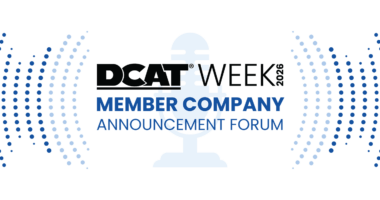The Large Bio/Pharma Highlights: The Highs and Lows in the Bottom Line Thus Far In 2023
What have been some of the highs and lows thus far in 2023 from the large bio/pharmaceutical companies and what may be expected for the rest of the year? From Pfizer’s revenue declines for its COVID-19 products, to rising sales from Lilly and Novo Nordisk for their diabetes and weight-management drugs, to Viatris’ plan for further divestures, DCAT Value Chain Insights sums up the latest developments.
Pfizer. Key issue for Pfizer was the drop in revenues for its COVID-19 products, its COVID-19 vaccine, Comirnaty, and oral treatment for COVID-19, Paxlovid (nirmatrelvir/ritonavir), which drove a 53% operational decrease in second-quarter 2023 revenues. The products posted second-quarter 2023 revenues of $1.6 billion. Second-quarter 2023 Paxlovid revenues declined $8.0 billion, or 98%, operationally compared with the prior-year quarter, primarily driven by no second quarter US sales in anticipation of transition to traditional commercial markets in the second half of 2023, and lower contractual deliveries in most international markets. Second-quarter 2023 Comirnaty revenues declined $7.3 billion, or 82%, operationally compared with the prior year quarter, largely driven by lower contracted deliveries and demand in international markets and lower U.S. government contracted deliveries, with anticipated transition to new variant vaccines globally and to traditional US commercial market sales in the second half of 2023
Overall, Pfizer reported a 54% decline in second-quarter revenues from $24.7 billion in the second-quarter 2022 to $12.7 billion in the second quarter of 2023. First-half 2023 revenues were down 42% from $53.4 billion in the second quarter of 2022 to $31.0 billion.
For the full-year 2023, Pfizer estimates reveues of $67 billion to $70 billion, a still very strong revenue position, but lower due to sales of its COVID-19 products. The midpoint of the guidance range for revenues reflects a 31% operational decrease compared to 2022 revenues. Company revenues are anticipated to be lower in 2023 than in 2022 due to expected revenue declines for Pfizer’s COVID-19 products, partially offset by expected operational growth from its non-COVID-19 in-line portfolio, anticipated new product and indication launches and recently acquired products. For the full-year 2023, the company expects Comirnaty revenues of approximately $13.5 billion, down 64% from 2022 results and Paxlovid revenues of approximately $8 billion, down 58% from 2022 results. Excluding COVID-19 products, Pfizer is now expecting 6% to 8% operational revenue growth in 2023.
Lilly and Novo Nordisk. Key growth drivers for Eli Lilly and Company and Novo Nordisk thus far in 2023 were its diabetes and weight-management drugs, respectively Lilly’s Mounjaro (tirzepatide) and Novo Nordisk’s Wegovy (semaglutide) and Saxenda (liraglutide). Revenues for Lilly’s Mounjaro soared in the first half of 2023 to $1.5 billion from only $16 million in the year-ago period. For the second-quarter 2023, worldwide Mounjaro revenue was $979.7 million. US revenue was $915.7 million reflecting increased volume and, to a lesser extent, higher realized prices due to decreased utilization of savings card programs as access continues to expand. Lilly says it has experienced and continues to expect intermittent delays fulfilling orders of certain Mounjaro doses given significant demand. These delays have impacted, and may continue to impact, volume. Mounjaro launched in the US for the treatment of Type 2 diabetes in June 2022. Revenue outside the US was $64.0 million. For Novo Nordisk, sales within its Diabetes and Obesity care increased by 36% to DKK 99.0 billion ($14.6 billion), mainly driven by GLP-1 diabetes sales growth of 49% and Obesity care growing by 158%.
Viatris. Among the large generics players, for the first six months of 2023, Viatris reported net sales of $7.6 billion, an 8% decline from the year-ago period of $8.3 billion. The company stayed on track with previously announced strategic goals, including in paying down its debt by paying down $727 million for the first half of the year (2023). The company also says it is on track in proceeding with other divestitures with expectations to announce at least one significant divestiture or more in the third quarter. It expects revenues of $15.5 billion to $16.0 billion for the full-year 2023.
These moves are part of what the company has termed as a “re-shaping plan,” and growth plan, which includes restructuring, divestments of non-core assets, paying down debt, and generating improved revenue growth. The company is in Phase I of that plan, which set a target of achieving cost synergies of $1 billion-plus by the end of 2023 from the integration of the 2020 merger of Mylan (the legacy company of Viatris) and Upjohn, Pfizer’s generics and established medicines, to form Viatris. The company also has a goal to achieve $9 billion in pre-tax proceeds from the divestment of non-core assets. A key move in 2022 was a $3.35-billion deal to divest its biosimilars assets to Biocon Biologics, a Bangalore, India-based biosimilars company and subsidiary of Biocon Ltd., which gave Viatris gross proceeds of $2 billion in cash and a 12.9% stake in Biocon Biologics. To boost revenues, Viatris acquired two ophthalmology drug companies (Oyster Point Pharma and Famy Life Sciences) for a combined total of $750 million to establish an ophthalmology franchise as a new revenue source. Viatris officially launched its new Eye Care Division earlier this year (January 2023) and is projecting to add more than $1 billion in net sales from its eye-care portfolio by 2028.
Phase I of the company’s reshaping plan ends in 2023 with Phase 2 of the plan beginning in 2024. In its 2022 earnings announcement earlier this week (February 27, 2023), Viatris provided an update of its strategic plan. In 2022, it paid down approximately $3.3 billion in debt and has paid down approximately $5.4 billion since 2021. Viatris says it also remains on track to execute planned further divestitures.







